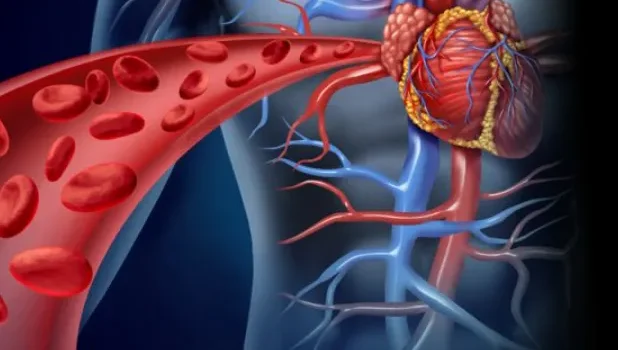
Cholesterol is a fat-like substance that your liver naturally produces to help build healthy cells. While it’s essential for your body’s function, having high levels of cholesterol can significantly raise your risk of heart disease and other serious health conditions.
When cholesterol levels are too high, fatty deposits begin to accumulate in your arteries, narrowing the passageways and making it harder for blood to flow. This can eventually lead to life-threatening conditions such as heart attacks and strokes.
Understanding LDL and HDL Cholesterol
There are two main types of cholesterol: LDL (low-density lipoprotein) and HDL (high-density lipoprotein).
LDL is often called “bad” cholesterol because it contributes to plaque buildup in the arteries. When there’s too much LDL in the bloodstream, it can stick to the artery walls and form plaque, restricting blood flow and leading to heart disease over time.
HDL, on the other hand, is known as “good” cholesterol. It helps remove excess cholesterol from the bloodstream by carrying it back to the liver, where it’s processed and eliminated. High levels of HDL cholesterol are beneficial for heart health, as it can help prevent artery blockages.
What Causes High Cholesterol?
High cholesterol is commonly caused by unhealthy lifestyle habits such as a poor diet, lack of physical activity, and obesity. However, genetics also play a role, with some individuals being more predisposed to high cholesterol due to family history.
Certain health conditions like diabetes, hypothyroidism, and kidney disease can also contribute to high cholesterol, as can some medications.
Risk Factors for High Cholesterol
Several factors increase the likelihood of developing high cholesterol, including:
- A diet rich in saturated and trans fats
- Being overweight or obese
- Lack of physical activity
- Smoking
- Excessive alcohol consumption
- Age (risk increases after 40)
- Family history of high cholesterol
The more risk factors you have, the greater your chances of developing high cholesterol and its associated complications.
The Dangers of High Cholesterol
When left unchecked, high cholesterol can lead to serious health issues, including:
- Atherosclerosis
This condition, also known as “hardening of the arteries,” occurs when cholesterol and plaque accumulate inside the arteries, narrowing them and restricting blood flow. Over time, this can lead to dangerous blockages that increase the risk of heart attack, stroke, and other cardiovascular events. - Heart Attack
If a plaque ruptures and a clot forms in a coronary artery, it can block the blood flow to the heart, causing a heart attack. Without immediate treatment, heart tissue can be permanently damaged. - Stroke
Similar to a heart attack, if cholesterol plaque blocks an artery that supplies blood to the brain, it can cause a stroke. This deprives brain tissue of oxygen and nutrients, leading to brain damage and potential long-term disability. - Angina
Angina refers to chest pain caused by reduced blood flow to the heart. It’s often a warning sign that coronary artery disease is present, and it typically occurs during physical exertion or stress. - Carotid Artery Disease
This condition occurs when cholesterol plaque builds up in the carotid arteries, which supply blood to the brain. It increases the risk of stroke, and in some cases, it can be treated with surgery or medication. - High Blood Pressure
High cholesterol can stiffen and narrow the arteries, leading to high blood pressure. When these two conditions occur together, the risk of heart disease and stroke is significantly higher. - Congestive Heart Failure
If the heart becomes weakened after a heart attack, it may not pump blood effectively, causing fluid to build up in the lungs and other parts of the body. This condition is known as congestive heart failure and can result in difficulty breathing and fatigue. - Peripheral Artery Disease (PAD)
PAD occurs when plaque builds up in the smaller arteries, particularly in the legs, causing pain during walking. If untreated, it can lead to more severe complications like tissue damage or gangrene.
How to Reduce Your Risk
The best way to lower your cholesterol levels and reduce the risk of cardiovascular disease is by adopting a heart-healthy lifestyle. Here are some key strategies:
- Lose excess weight: Maintaining a healthy weight helps lower cholesterol and reduce overall cardiovascular risk.
- Exercise regularly: Aim for at least 30 minutes of moderate-intensity activity most days of the week to help improve cholesterol levels.
- Quit smoking: Smoking raises your LDL levels and lowers HDL levels, so quitting will significantly improve your heart health.
- Limit alcohol intake: Excessive alcohol raises triglyceride levels and can increase cholesterol levels, so drink in moderation.
- Eat a heart-healthy diet: Incorporate more fruits, vegetables, whole grains, and healthy fats into your diet while cutting back on processed foods, trans fats, and saturated fats.
By following these healthy habits, you can significantly improve your cholesterol levels and reduce your risk of heart disease and other related conditions.












